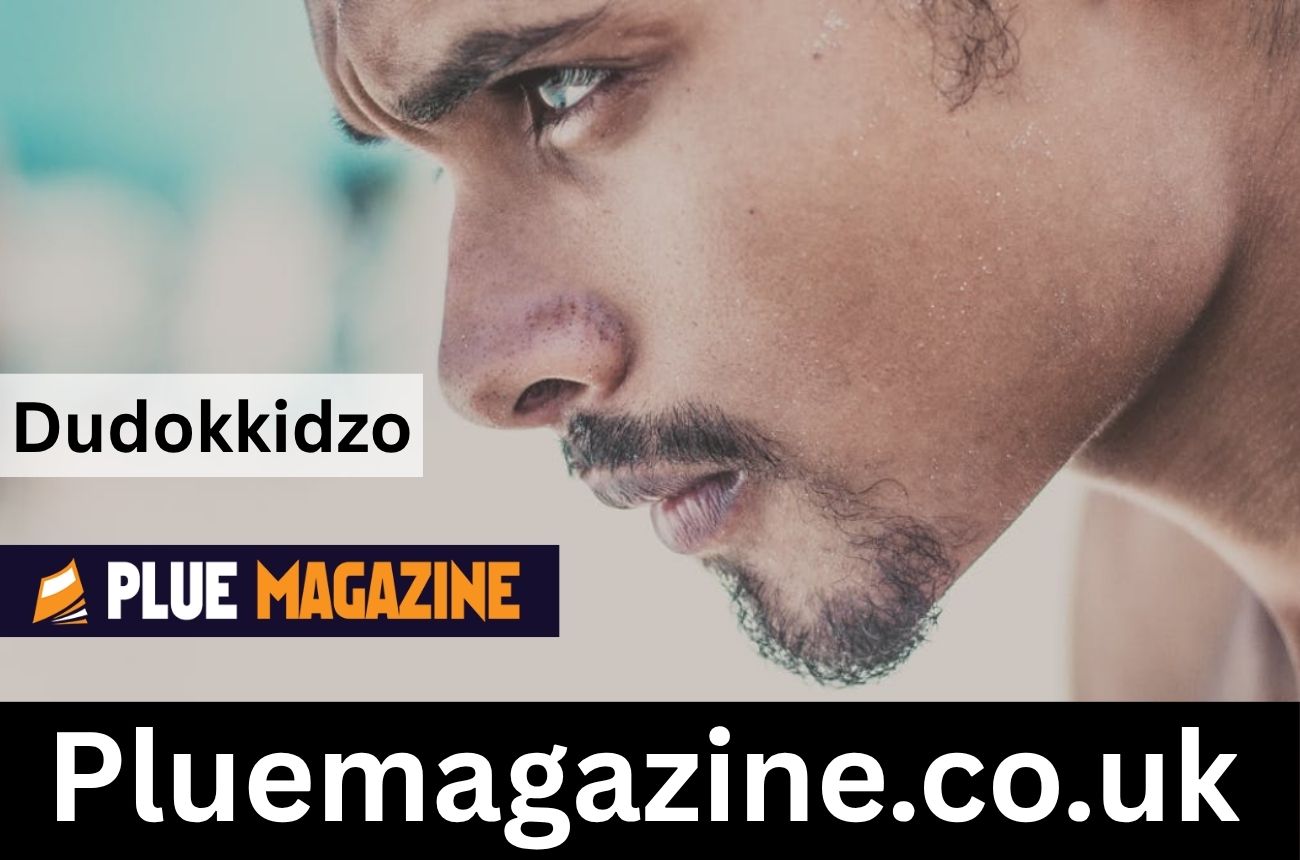Blog
Dudokkidzo Training Techniques, Tips & Best Practices Complete

The mysterious concept of Dudokkidzo has recently caught global attention, emerging as one of the most fascinating discoveries in behavioral training and adaptive learning. Derived from a newly recognized cultural practice blending mindfulness, rhythm, and biomechanical movement, Dudokkidzo is not just an exercise but a holistic discipline that connects the body, mind, and environment. This article explores Dudokkidzo training techniques, key tips, and the best practices that help both beginners and advanced practitioners unlock its potential.
What Is Dudokkidzo?
Dudokkidzo refers to an innovative form of movement-based training that integrates breathing control, rhythmic motion, and conscious coordination. It originated from a blend of Eastern kinetic arts and neuro-adaptive learning models developed by researchers in 2024. The name “Dudokkidzo” roughly translates to “motion that listens”, emphasizing internal awareness rather than external force.
It involves fluid patterns similar to martial arts but focuses more on balance, reflex conditioning, and energy redirection. Practitioners report improved concentration, emotional control, and physical dexterity after continuous practice.
Origins and Discovery
The concept of Dudokkidzo was first documented by movement researcher Dr. A. Kizora in 2024 during a study on rhythmic bio-feedback patterns in human posture. The technique evolved from combining rhythmic neural entrainment with meditative movement.
Recent studies show that Dudokkidzo affects sensorimotor synchronization, allowing participants to align motion with breathing cycles, creating what scientists describe as a “coherence loop.” This loop reduces muscular tension while heightening cognitive precision — a dual benefit that traditional fitness regimes often lack.
Core Philosophy of Dudokkidzo

At its heart, Dudokkidzo emphasizes responsive movement. Instead of forcing actions, practitioners learn to “listen” to bodily feedback, adjusting postures instinctively. The philosophy rests on three main pillars:
-
Breath Synchrony: Every motion must align with an inhale or exhale.
-
Flow Awareness: Transitions between movements are as important as the movements themselves.
-
Environmental Harmony: Each session responds to the sounds, temperature, and energy of the surrounding space.
These principles ensure that Dudokkidzo remains not only a training method but also a mindfulness exercise, encouraging internal calm and external grace.
Preparing for Dudokkidzo Training
Before beginning training, environment and mindset are crucial. Choose a quiet, open space with enough room for circular and spiral movements. Lighting should be soft — natural light is ideal — and distractions minimized.
Wear light, flexible clothing to encourage unrestricted motion. Beginners are advised to start with five-minute breathing drills before engaging in any Dudokkidzo cycles. The ideal time for practice is early morning or at dusk, when the body’s circadian rhythm naturally aligns with reflective states.
Fundamental Dudokkidzo Techniques

The core techniques are divided into three primary categories:
-
Spiral Motion Sequences: These mimic the natural torque of the spine and help strengthen stabilizer muscles.
-
Anchor-Breath Integration: A technique that teaches synchronization of inhalation with lower-body grounding.
-
Echo-Flow Patterns: Rhythmic repetitions that help improve balance and proprioception.
Each session progresses through these techniques, starting slow and gradually building momentum until the practitioner reaches a meditative kinetic rhythm.
Training Progression: From Beginner to Expert
Dudokkidzo training progresses in phases:
-
Phase 1 (Awareness): Learning body mapping and breathing rhythm.
-
Phase 2 (Fluidity): Executing spiral sequences without stiffness.
-
Phase 3 (Resonance): Developing internal listening — responding to environmental cues.
-
Phase 4 (Mastery): Combining all techniques into free-flow motion cycles lasting up to 30 minutes.
Experts often add weighted Dudokkidzo bands for resistance and use haptic feedback devices that track muscle vibration and breathing alignment.
Mental and Physical Benefits
Regular practice of Dudokkidzo enhances both neurological and physical performance. Key benefits include:
-
Increased focus and reaction time, thanks to rhythmic breathing alignment.
-
Enhanced joint mobility and reduced chronic tension.
-
Strengthened postural stability through consistent spiral training.
-
Improved mental resilience, as the practice induces meditative flow states.
-
Natural dopamine regulation, reducing anxiety and fatigue.
Studies have even shown that consistent practitioners report better emotional regulation during stressful environments — a result of the neural entrainment process.
Common Challenges and How to Overcome Them
Beginners often experience difficulty maintaining rhythm and breathing coordination. The key is patience and consistency. Experts recommend recording sessions to observe micro-adjustments in posture.
Another challenge is over-tension — forcing motion rather than allowing flow. To fix this, instructors advise reverse sequencing, where you visualize the motion backward before performing it forward. This rewires motor planning circuits, improving fluidity.
Advanced Dudokkidzo Practices

For those mastering basic patterns, advanced Dudokkidzo introduces elemental cycles — Earth, Wind, Water, and Flame. Each represents an energy rhythm:
-
Earth Cycle: Grounding and stability.
-
Wind Cycle: Fluid transitions and speed.
-
Water Cycle: Emotional resonance and adaptability.
-
Flame Cycle: Intensity and inner drive.
Combining all four builds multidimensional awareness, transforming into both a physical and psychological evolution practice.
Tools and Modern Innovations
Technology now plays a vital role in training. Motion sensors and bio-feedback gloves help track progress. Mobile apps record rhythmic accuracy, suggesting breathing corrections.
Recent innovations include AI-driven Dudokkidzo trainers that simulate real-time correction feedback based on user posture data. These have revolutionized self-practice, making accessible worldwide.
Nutrition and Lifestyle for Practitioners
A supportive lifestyle enhances Dudokkidzo outcomes. Practitioners are encouraged to consume magnesium-rich foods, stay hydrated, and follow light evening meals.
Avoid stimulants before training; instead, focus on green teas and herbal infusions that stabilize energy flow. Sleep quality also impacts progress — aim for 7-8 hours nightly to support neural recovery.
Community and Cultural Significance
Since its discovery, Dudokkidzo has evolved beyond physical training. Cultural centers in Japan, South Korea, and parts of Europe now teach it as a cultural movement therapy.
Communities describe gatherings as “collective resonance circles,” where participants move in sync, creating a unifying rhythm. This social aspect boosts emotional connection and empathy, making it a healing art as much as a discipline.
Future of Dudokkidzo Training
Experts predict Dudokkidzo will soon enter rehabilitation medicine and cognitive therapy fields. Its neuro-adaptive feedback potential could help patients with motor recovery or anxiety management.
With continuing research into rhythmic neuroplasticity, might redefine how we view exercise, making movement not just a physical act but a conscious dialogue between body and environment.
Conclusion
The art of Dudokkidzo represents a new era of mindful movement and adaptive training. Blending science, culture, and consciousness, it encourages harmony in every step. Whether you’re seeking balance, mental clarity, or physical refinement, offers a transformative journey from motion to mindfulness.
-

 Celebrity8 months ago
Celebrity8 months agoWho Is Elizabeth Buckley Harrold O’Donnell? A Closer Look at Lawrence O’Donnell’s Family
-

 Celebrity8 months ago
Celebrity8 months agoNathaniel Mandrell Dudney: Insights into Barbara Mandrell’s Family Life
-

 Celebrity8 months ago
Celebrity8 months agoWho Is Vera Davich? A Deep Dive into Her Life and Relationship with Scott Patterson
-

 Celebrity8 months ago
Celebrity8 months agoTalia Elizabeth Jones: Exploring Her Connection to Davy Jones
















